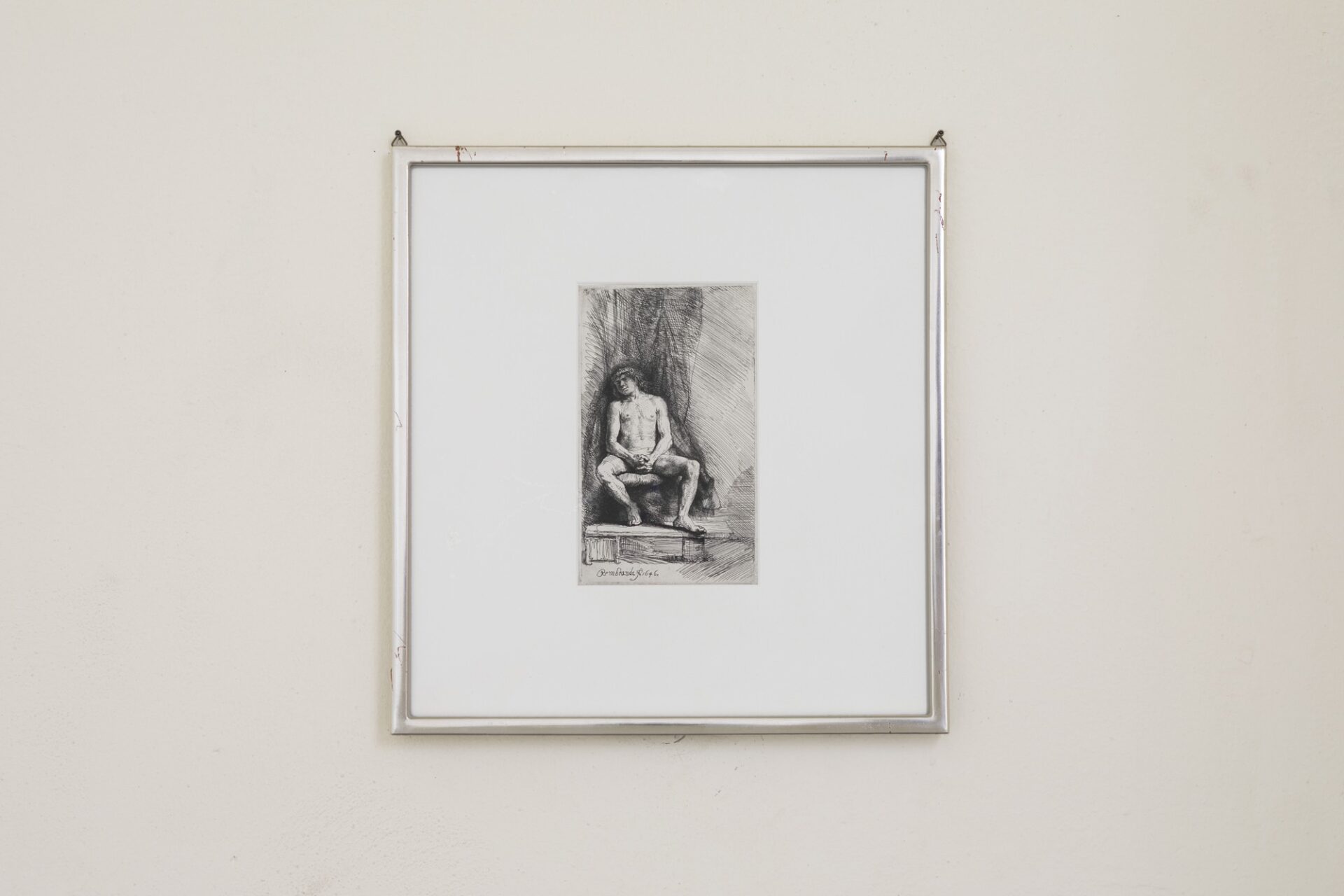From 1640 to 1650, Rembrandt van Rijn taught life-drawing classes in Amsterdam, during which time he also made a number of studies of the human body. His pupils were boys who ranged in age from twelve to fourteen who wanted to apprentice in painting; assistants, such as Ferdinand Bol and Samuel van Hoogstraeten; and amateurs. Students copied drawings, prints, and paintings before being allowed to work with live models.
In addition to this etching, Donald Judd installed another Rembrandt etching, Student at a Table by Candlelight, c. 1642, nearby in a small alcove in his Architecture Studio, and one in his kitchen in the east building at La Mansana de Chinati/The Block. He wrote of Rembrandt, “European art of the last few hundred years . . . is based primarily on immediate emotions, those you feel when you look out at the world. Rembrandt, for example, is a compendium of gloom, sadness, and tragedy. This immediacy of feeling is basic to all of his paintings.”1
